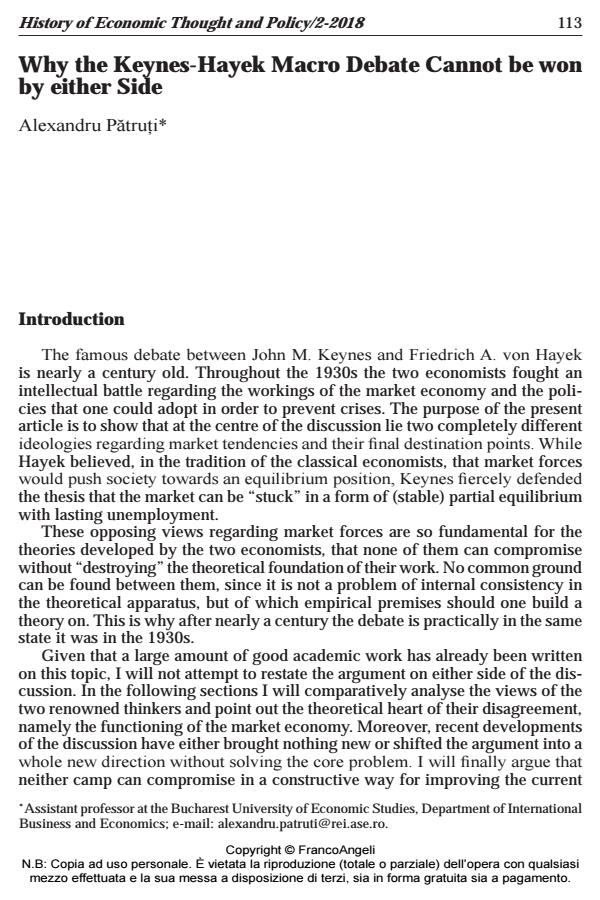Why the Keynes-Hayek Macro Debate Cannot be won by either Side
Journal title HISTORY OF ECONOMIC THOUGHT AND POLICY
Author/s Alexandru Patruti
Publishing Year 2019 Issue 2018/2
Language English Pages 13 P. 113-125 File size 181 KB
DOI 10.3280/SPE2018-002006
DOI is like a bar code for intellectual property: to have more infomation
click here
Below, you can see the article first page
If you want to buy this article in PDF format, you can do it, following the instructions to buy download credits

FrancoAngeli is member of Publishers International Linking Association, Inc (PILA), a not-for-profit association which run the CrossRef service enabling links to and from online scholarly content.
The controversy between Keynes and Hayek is one of the most renown in economics. Although it is now almost a century old, it does gather momentum from time to time, especially during periods of crisis when decision-makers are looking for policy solutions. However, in academic writings the actual debate did not and cannot find a common ground. I aim to show in the present article that at the center of the controversy is not a logical fallacy in the theoretical apparatus of either of the two economists, but the empirical premises which they took for granted. While Hayek believed that the market will tend towards equilibrium, and that real life conditions actually approximate this, Keynes considered that the market can be stuck in a partial equilibrium compatible with unemployment. I will further argue that subsequent developments attempt to move the debate in a whole new direction rather than solve this central issue.
Keywords: Equilibrium, market tendencies, J. M. Keynes, F. A. Hayek, market interest rate, unemployment
Jel codes: B13, B22, E20, E43, D50
- Keynes and Hayek: some common elements in business cycle theory ALEXANDRU PĂTRUŢI, in Brazilian Journal of Political Economy /2023 pp.48
DOI: 10.1590/0101-31572023-3375
Alexandru Patruti, Why the Keynes-Hayek Macro Debate Cannot be won by either Side in "HISTORY OF ECONOMIC THOUGHT AND POLICY" 2/2018, pp 113-125, DOI: 10.3280/SPE2018-002006